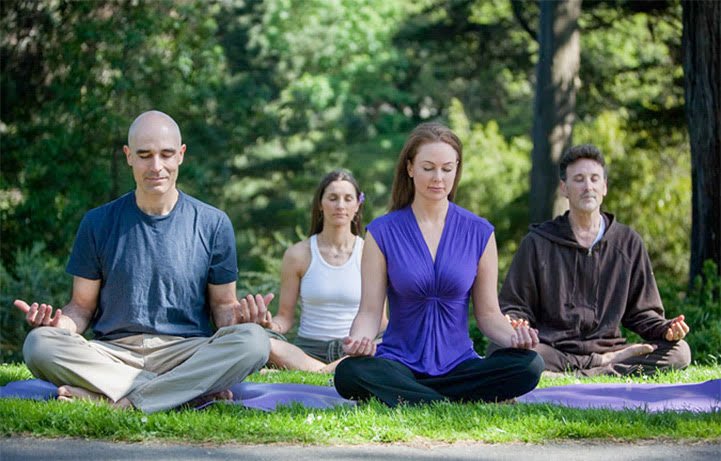
relief
Build stress resilience and navigate daily challenges with ease using science-backed strategies to manage stress, boost well-being, and find lasting calm.
Psychological resilience is the ability to withstand, adapt to, and recover from life’s difficulties. Everyone faces challenges—loss, illness, change, uncertainty—but what determines whether these challenges break us down or strengthen us is our resilience. Far from being a fixed trait, resilience is a skill set that can be cultivated, strengthened, and deepened over time.
Developing resilience requires understanding how stress functions and its impact on both the body and mind. The nervous system responds to stress with a cascade of hormones and physiological changes; however, these responses are not always beneficial when stress becomes chronic. Without training, stress can accumulate like an “emotional tax” that drains energy and motivation.
Building resilience is like training a muscle. By practicing specific strategies—such as reframing challenges, developing positive habits, and practicing SKY Breath Meditation—we strengthen our inner capacity to adapt. Genetics, environment, social connections, and lifestyle choices influence resilience. This makes it deeply personal yet universally attainable.

Stress is a natural survival mechanism, but in the modern world, it often works against us. When a stressful event arises, the hypothalamus signals the adrenal glands to release adrenaline and cortisol. Heart rate increases, muscles tense, and blood pressure rises. In the short term, this helps us take action. However, when stressors persist—such as constant work demands or ongoing financial strain—the system becomes overactive.
Prolonged stress can lead to chronic inflammation, digestive issues, memory impairment, and immune suppression. Research from Harvard Medical School has demonstrated that long-term stress can damage the hippocampus, a brain region crucial for learning and memory. Stress can even interfere with sleep, creating a vicious cycle where exhaustion makes coping more difficult.
Fortunately, stress is not something we are powerless against. Studies show that regulating the breath is one of the fastest ways to signal safety to the nervous system. SKY Breath Meditation, with its structured breathing cycles, calms the amygdala and stimulates the vagus nerve. This “reset button” effect shifts the body from sympathetic overdrive to parasympathetic restoration, allowing deeper recovery from daily stress.
When stress is understood not as a fixed enemy but as a manageable physiological state, individuals can feel more empowered. Instead of being hijacked by the fight-or-flight response, we can consciously activate the body’s rest-and-digest system through practices such as breathwork, mindfulness, and resilience-building habits.

Traumatic stress goes beyond the ordinary ups and downs of life. It arises from events that overwhelm an individual’s ability to cope, such as abuse, violence, accidents, or disasters. Trauma imprints deeply in the nervous system. Even long after the danger has passed, the body may react as though the threat is still present. This can manifest as flashbacks, sleep disturbances, anxiety, or emotional numbness.
Research from the National Institute of Mental Health shows that trauma can disrupt the prefrontal cortex–amygdala connection, making it harder to regulate fear and emotion. Epigenetic studies also suggest that traumatic experiences alter gene expression, influencing how resilience circuits function for years to come. These changes explain why some people may feel “stuck” in stress, even with time and distance from the original event.
Traumatic stress can lead to severe conditions such as post-traumatic stress disorder (PTSD), depression, or substance abuse. But resilience is still possible. Therapeutic support, combined with evidence-based practices like SKY Breath Meditation, offers a pathway forward. In a University of Arizona study, war veterans practicing SKY reported a 40% reduction in PTSD symptoms, along with improvements in sleep and social connection.
This highlights a hopeful truth: while trauma reshapes the nervous system, healing practices can also reshape it. By training the body and mind through breathwork, mindfulness, and community support, individuals can restore balance, regain trust in their own resilience, and reclaim joy.

Resilience is the capacity to bend without breaking, to adapt without losing oneself. It is not about avoiding stress but about cultivating the inner strength to face it and recover.
Key elements of resilience include emotional regulation, cognitive flexibility, optimism, and social support. Resilient individuals tend to view challenges as opportunities for growth rather than insurmountable obstacles. They also maintain perspective, avoid catastrophic thinking, and adapt more quickly to change.
Resilience training can take many forms. Cognitive-behavioral strategies help reframe negative thoughts. Journaling and reflection strengthen self-awareness. Group support fosters belonging. SKY Breath Meditation enhances resilience by directly regulating the stress response at a biological level. Its rhythmic breathing patterns lower cortisol, improve heart rate variability, and strengthen the prefrontal cortex. This makes it easier to pause before reacting, recover quickly from emotional triggers, and approach challenges with clarity.
Individual differences also matter. Some people naturally rebound more quickly, while others need structured training to build these skills. But resilience is never out of reach. By combining supportive relationships, healthy routines, and daily practices such as SKY, resilience grows like a muscle—with consistency, practice, and care.

While resilience often begins with mindset, it is reinforced through daily lifestyle choices. Our physical health, sleep patterns, and nutrition strongly influence how we respond to stress. Building resilience, therefore, requires nurturing both the body and the mind.
Core habits for resilience include:
Nature exposure is another powerful habit. Time in natural environments reduces stress hormones, lowers blood pressure, and fosters a sense of perspective. Similarly, cultivating supportive relationships creates a safety net that makes life’s challenges less overwhelming.
SKY Breath Meditation fits seamlessly into this healthy-habit framework. Practicing SKY each morning sets the tone for resilience throughout the day. Studies show participants feel calmer, more energized, and better equipped to handle stress. Combined with exercise, healthy eating, and sleep, SKY creates a synergistic effect, reinforcing resilience from multiple angles.
Ultimately, healthy habits are not just “add-ons” to resilience—they are the soil in which resilience grows. By caring for the body, engaging the mind, and calming the nervous system, individuals can build a foundation that supports stress recovery and emotional well-being for years to come.

The brain’s architecture is central to how we experience and recover from stress. Neuroscientists have identified several key regions:
Animal models show that resilience can be observed at the cellular level. Resilient rodents demonstrate different gene expression patterns compared to vulnerable ones, even under the same stress conditions.
For humans, this means interventions can literally shift the brain’s biology. SKY Breath Meditation enhances vagal tone and increases heart rate variability—markers of resilience associated with better outcomes under stress. By regularly engaging these neural pathways, the brain learns to recover faster and adapt more effectively.

Resilient people don’t have fewer problems; they have more adaptive brains. Brain imaging studies show that resilience correlates with stronger connectivity between the prefrontal cortex and the amygdala. This allows top-down regulation of emotional reactivity.
Cognitive flexibility, emotional regulation, and executive function are all skills tied to resilience. Neuroplasticity—the brain’s capacity to form new connections—is what makes these skills trainable at any age.
Meditation practices like SKY enhance neuroplasticity. Research from Stanford University shows that SKY participants report greater emotional regulation and improved clarity of thought, both of which are linked to healthier brain function.

Practical resilience-building strategies empower individuals to thrive under stress.
Each of these strategies enhances the brain’s ability to remain calm, flexible, and solution-oriented.

Resilience does not develop in isolation. Human beings are wired for connection, and supportive relationships are one of the most substantial buffers against stress. Social support can take many forms—emotional encouragement, practical help, shared experiences, or simply the knowledge that someone is “in your corner.” These connections provide a sense of belonging, safety, and perspective during difficult times.
Psychological research consistently shows that individuals with strong social ties recover from stress faster than those who feel isolated. According to studies published in the American Journal of Psychiatry, people with high levels of perceived social support demonstrate lower rates of depression, greater stress resilience, and even better physical health outcomes. Connection not only softens the emotional impact of stress but also alters its physiological effects by lowering cortisol levels and promoting the release of oxytocin.
Social interaction can also promote positive adaptation. When we face stress together, challenges seem less overwhelming. Sharing struggles with trusted friends or family helps reframe problems, encourages solution-focused thinking, and prevents the spiral of negative rumination. In this way, community becomes both a mirror and a stabilizer, reminding us that we are not alone in our journey.
Practices like SKY Breath Meditation offer a unique opportunity to strengthen resilience in community settings. Group SKY sessions are designed around synchronized rhythmic breathing, which creates a powerful sense of shared rhythm and collective calm. Research has shown that synchronized group practices increase feelings of connection and belonging, reduce loneliness, and foster greater empathy. Many practitioners describe leaving a group SKY session feeling “lighter” and more connected—not only to themselves but also to others.
Building and maintaining social connections can take many forms:
Social support also provides purpose. When we are connected to others, we often feel more motivated to care for ourselves and to contribute positively to the lives around us. This sense of belonging and mutual responsibility is a cornerstone of resilience.
The Art of Living community emphasizes this principle deeply. Participants not only learn SKY Breath Meditation but also practice it together, form supportive bonds, and carry the resilience it instills into their families and workplaces. In this way, resilience is not only an individual trait—it becomes a shared resource, magnified through human connection.
Mindfulness builds resilience by anchoring us in the present. Instead of being pulled into past regrets or future worries, mindfulness cultivates steady awareness.
SKY Breath Meditation merges mindfulness with active breath regulation. Unlike passive observation, SKY’s rhythm guides the nervous system directly into balance. Studies have shown that SKY practitioners experience lower cortisol levels, increased emotional awareness, and improved empathy. Over time, this mindfulness leads to greater compassion and inner calm.

Having a clear sense of purpose transforms the way we respond to stress. When people know why they are doing what they do, setbacks feel less like obstacles and more like temporary hurdles along a meaningful journey. Viktor Frankl, in his classic work Man’s Search for Meaning, observed that those who had a sense of purpose were more resilient in the most challenging circumstances.
Purpose provides a compass during times of uncertainty. It allows individuals to align their daily actions with deeper values, whether that means caring for family, serving the community, or contributing to a cause larger than themselves. Research published in The Journal of Positive Psychology reveals that individuals with a strong sense of purpose not only recover more quickly from stress but also experience longer, healthier lives.
Practices such as SKY Breath Meditation help create the mental clarity needed to connect with purpose. By quieting the mind, SKY opens a space where values and inner priorities come into focus. Many practitioners report experiencing a stronger alignment with their life goals and an enhanced sense of meaning after regular practice. Purpose does not always need to be grand or global; it can be as simple as showing up fully for loved ones or nurturing personal growth. Whatever the form, it strengthens resilience by providing motivation and direction.

One of the greatest drains on resilience in modern life is overload. Endless commitments, cluttered schedules, and constant digital stimulation keep the nervous system in a low-level state of stress. Simplifying life—paring down to what truly matters—restores focus and calm.
When individuals reduce non-essential commitments, they create more mental and emotional space for the things that matter most. Simplification does not mean abandoning responsibilities but prioritizing wisely. It may mean saying no to certain activities, delegating tasks, or decluttering the physical environment. Research from UCLA found that people who live in cluttered spaces report higher cortisol levels and greater anxiety.
Prioritizing self-care is an essential part of this simplification process. SKY Breath Meditation provides a structured daily pause, offering recovery time for the mind and nervous system. Because it requires no equipment and can be practiced anywhere, SKY is a practical resilience tool even in the busiest of schedules.
Simplifying life also means aligning actions with values. By consciously focusing on essentials, individuals build resilience through clarity, balance, and energy conservation. In this way, less truly becomes more.

Problem-solving is a key resilience skill. Challenges, whether personal or professional, are often less about their inherent difficulty and more about our approach to them. Resilient individuals view problems as puzzles to be worked through rather than catastrophes to be feared.
Effective problem-solving involves:
Resilient problem-solvers also build self-efficacy—the belief that they can influence outcomes through their own actions. This belief is crucial because it shifts the mindset from one of helplessness to one of empowerment.
SKY Breath Meditation strengthens problem-solving by calming emotional reactivity. When stress hormones flood the system, decision-making becomes clouded, and the brain defaults to short-term survival thinking. SKY resets the nervous system, restoring clarity and focus. This allows individuals to analyze situations more rationally and creatively. Over time, consistent practice creates the mental resilience to approach problems with calm confidence rather than panic.

Compassion is both a strength and a resilience strategy. Self-compassion helps individuals recover from setbacks without being paralyzed by guilt or harsh self-criticism. Empathy strengthens connections with others, creating networks of care that buffer against stress.
Research from the University of Wisconsin has shown that compassion training increases activity in brain regions associated with positive emotion and social connection. People who practice compassion not only feel better themselves but also build stronger, more supportive communities.
SKY Breath Meditation supports compassion biologically. By stimulating oxytocin—the hormone that promotes bonding—SKY enhances feelings of trust, warmth, and empathy. Practitioners often describe feeling more patient with themselves and more understanding toward others after practice. This emotional softening does not weaken resilience—it strengthens it by fostering connection and reducing isolation.
Compassion and empathy also create a feedback loop: the more we extend care, the more we feel supported. This shared humanity forms one of the deepest roots of resilience.

Uncertainty is a constant in life. Whether it is changing jobs, waiting for health results, or navigating global events, ambiguity can provoke significant stress. Our brains are wired to prefer predictability, and when certainty is absent, anxiety often increases.
Building resilience means learning to tolerate ambiguity without becoming overwhelmed by it. This involves cultivating adaptability, flexibility, and trust in one’s inner resources. Research in resilience psychology suggests that individuals who are more comfortable with uncertainty exhibit greater creativity and problem-solving abilities.
Mindfulness practices, including SKY Breath Meditation, are particularly effective in this context. By anchoring awareness in the present moment, SKY reduces worry about the future and rumination about the past. The nervous system learns to stay grounded even when external circumstances are unclear. Regular practice builds a kind of “muscle memory” for calm, enabling individuals to face the unknown with steadiness rather than fear.
Developing faith—whether in oneself, in others, or in a larger guiding principle—also helps navigate uncertainty. Trusting that clarity will emerge allows individuals to move forward with confidence despite ambiguity.

Ultimately, resilience does not just protect against stress—it enhances joy. Resilient individuals experience higher levels of happiness, gratitude, and life satisfaction. Instead of being knocked down by every difficulty, they maintain perspective, bounce back, and savor positive experiences more fully.
Happiness and resilience reinforce each other. Positive emotions broaden thinking, increase creativity, and build resources for coping with future stress—a principle known as the “broaden-and-build” theory in positive psychology. Gratitude practices, optimism, and focusing on strengths all increase resilience while also boosting happiness.
SKY Breath Meditation supports this process at a physiological level. Research shows that SKY reduces stress hormones while increasing serotonin, dopamine, and oxytocin—the brain’s “feel-good” chemicals. Practitioners often report feeling lighter, more optimistic, and more connected after practice. Over time, SKY builds not just resilience but also a deep sense of inner contentment, independent of external circumstances.
By cultivating resilience through habits, mindfulness, compassion, and breathwork, individuals don’t just survive stress—they thrive with greater joy, fulfillment, and a deeper sense of peace of mind.

Building resilience is not about eliminating stress but about transforming our relationship to it. Life will always present challenges—such as personal loss, unexpected change, health concerns, or global uncertainty. What determines whether these experiences weaken us or strengthen us is our capacity to adapt, recover, and find meaning through them.
Resilience is a skill set rooted in both biology and mindset. It leverages the flexibility of the nervous system, the adaptability of the brain, and the power of human connection. It thrives when supported by daily habits such as good nutrition, adequate sleep, and regular exercise, and it blossoms when combined with inner practices that restore balance and clarity.
SKY Breath Meditation has emerged as one of the most powerful tools for building resilience. Unlike techniques that address only the mind or the body, SKY integrates breath, physiology, and awareness into one comprehensive practice. Research from Harvard, Stanford, and the University of Arizona has confirmed its effectiveness in reducing stress, improving emotional regulation, and supporting trauma recovery. It directly trains the nervous system to reset, enabling individuals to respond to stress with clarity rather than reactivity.
The journey toward resilience is not a linear process. There will be setbacks, but each challenge becomes an opportunity to deepen the practice of recovery, compassion, and self-awareness. By cultivating resilience through SKY Breath Meditation, social connection, mindfulness, and purpose-driven living, anyone can learn to navigate life with greater steadiness, joy, and courage.
Remember—resilience is not a rare trait reserved for a few. It is a human capacity that lies within everyone, waiting to be strengthened through intention and practice. With patience and consistency, resilience becomes not just a response to stress but a way of living with greater happiness and fulfillment.

Resilience grows with daily action. Small, consistent practices build a foundation for long-term strength. The Art of Living offers an extensive menu of well-being programs to support your journey to stress resilience. Here are the steps you can begin today:
Resilience is not built overnight, but with consistent practice, these steps will lead to profound growth. The most important thing is to begin—even one breath at a time. SKY Breath Meditation provides a structured, evidence-based approach to taking that first step.
What is resilience, and why is it important?
Resilience is the ability to adapt and recover from stress or adversity. It helps maintain mental health, reduces the impact of challenges, and supports long-term well-being.
Can resilience be learned, or is it genetic?
While genetics influence stress responses, resilience is primarily a skill that can be developed through daily practices, healthy habits, and mindfulness techniques such as SKY Breath Meditation.
How does SKY Breath Meditation build resilience?
SKY calms the nervous system, reduces cortisol, and activates the vagus nerve. This strengthens emotional regulation and trains the body to recover more quickly from stress.
How quickly can I see results from SKY Breath Meditation?
Many people report feeling calmer and more focused after their very first session. With regular practice over weeks, SKY produces measurable changes in stress resilience, sleep quality, and emotional balance.
Is SKY Breath Meditation scientifically researched?
Yes. Studies at Harvard, Stanford, Yale, and the University of Arizona have shown SKY reduces anxiety, depression, and PTSD symptoms, and increases overall resilience and well-being.
What are some daily habits that improve resilience?
Balanced nutrition, regular exercise, adequate sleep, and mindfulness practices are essential. Adding SKY Breath Meditation creates a stronger foundation by calming the mind and regulating the nervous system.
How does social support increase resilience?
Supportive relationships buffer the impact of stress, provide encouragement, and foster belonging. Group SKY sessions magnify this effect by creating shared calm and connection.
Can resilience help with trauma recovery?
Yes. Resilience training, therapy, and mind-body practices like SKY help regulate the nervous system, making it easier to heal from traumatic stress and reduce long-term effects.
What is the difference between mindfulness and SKY Breath Meditation?
Mindfulness involves observing thoughts and feelings without judgment or attachment. SKY uses structured rhythmic breathing to actively reset the nervous system actively, creating calm more quickly while deepening awareness.
How much time should I dedicate to SKY Breath Meditation daily?
Most people practice SKY for 20–30 minutes a day. Even shorter sessions can create benefits, but consistency is more important than duration.
What role does purpose play in resilience?
Having a sense of purpose provides motivation and direction. It helps individuals see challenges as meaningful growth opportunities rather than setbacks. SKY practice creates the clarity needed to connect with that deeper sense of purpose.
What is the best way to begin building resilience today?
Start with one small step—practice SKY Breath Meditation daily. Then layer on healthy habits, such as exercise, quality rest, and supportive connections. Over time, resilience grows naturally.












